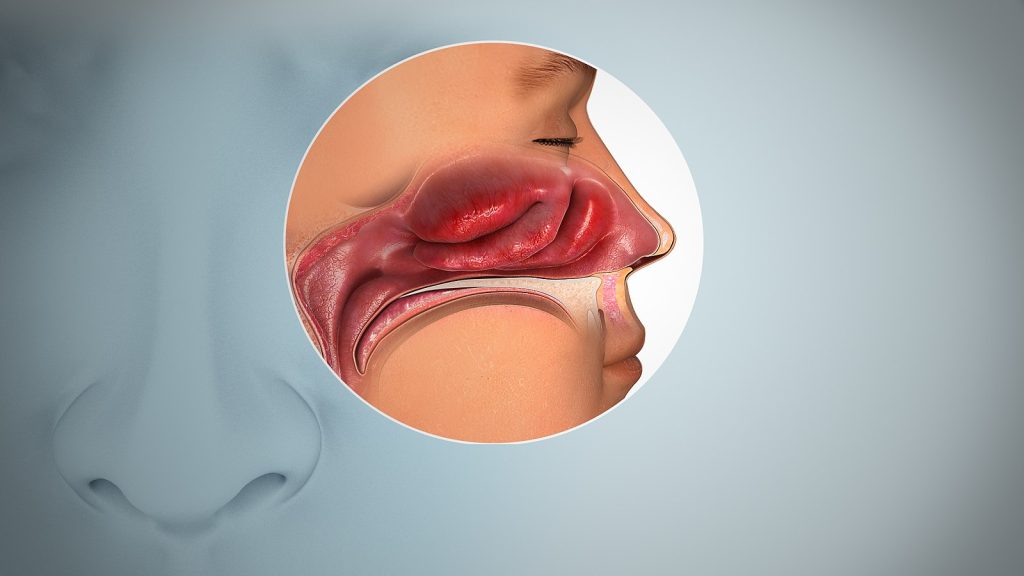Taste and Smell
38
Learning Objectives
Be able to define anosmia and give two examples of why it happens.
Understand why anosmia is dangerous.
Sometimes, certain conditions can lead to the loss of sense of smell. Anosmia, also known as smell blindness, is the loss of the ability to detect one or more smells. Anosmia may be temporary or permanent. It differs from hyposmia, which is a decreased sensitivity to some or all smells.
The loss of olfactory sensation is generally caused by the loss of the olfactory nerve, such as by blunt force trauma. When the frontal lobe of the brain moves relative to the ethmoid bone, the olfactory tract axons may be sheared apart. Therefore, professional fighters often experience anosmia because of repeated trauma to the face and head.
In addition, certain pharmaceuticals, such as antibiotics, can cause anosmia by killing all the olfactory neurons at once. If no axons are in place within the olfactory nerve, then the axons from newly formed olfactory neurons have no guide to lead them to their connections within the olfactory bulb. There are temporary causes of anosmia, as well, such as those caused by inflammatory responses related to respiratory infections or allergies (Fig.4.10.1).

Anosmia can be a dangerous condition, as smell is used frequently when detecting unsafe situations. For example, individuals suffering from anosmia may be unable to detect the smell of smoke or dangerous gases, which would normally alert them to a dangerous scene. This may also affect the individuals taste, as their odor receptors may no longer activate when eating. Further, the ability of olfactory neurons to replace themselves decreases with age, leading to age-related anosmia. This explains why some elderly people salt their food more than younger people do. However, this increased sodium intake can increase blood volume and blood pressure, increasing the risk of cardiovascular diseases in the elderly.
CC LICENSED CONTENT, SHARED PREVIOUSLY
OpenStax, Anatomy and Physiology Chapter 14.1 Sensory Perception
Provided by: Rice University.
Access for free at https://openstax.org/books/anatomy-and-physiology/pages/14-1-sensory-perception
License: CC-BY 4.0
Adapted by: Peter Yong
Cheryl Olman PSY 3031 Detailed Outline
Provided by: University of Minnesota
Download for free at http://vision.psych.umn.edu/users/caolman/courses/PSY3031/
License of original source: CC Attribution 4.0
Adapted by: Peter Yong
Wikipedia, Anosmia
Provided by: Wikipedia
URL: https://en.wikipedia.org/wiki/Anosmia
License: CC BY-SA 3.0
References:
Melinte, V., & Sarafoleanu, C. (2019). Congenital anosmia: a case report. Romanian Journal of Rhinology, 9(35), 161–164. doi: 10.2478/rjr-2019-0020

